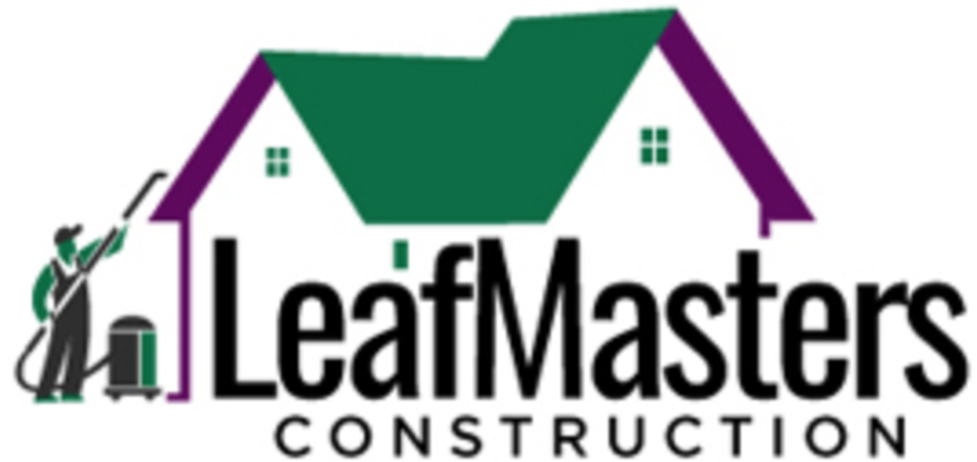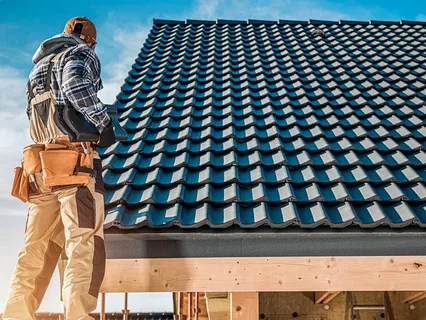Installing a new roof is a significant investment and an essential part of home maintenance. Whether you’re replacing an old roof or building a new one, proper installation is crucial for the longevity and performance of the roof. However, roofing installation is a complex task that requires attention to detail, knowledge, and precision. Unfortunately, many homeowners and even contractors make common mistakes during the installation process that can lead to costly repairs and premature roof failure. In this article, we will explore the common mistakes to avoid during roofing installation to ensure a successful and durable roofing project.
1. Choosing the Wrong Type of Roof for Your Home
One of the first and most critical decisions in a roofing project is selecting the right type of roof. There are various roofing materials available, each with its unique features, advantages, and drawbacks. The most common roofing materials include asphalt shingles, metal, wood shakes, slate, and tile. Choosing the wrong material can lead to poor performance and premature wear.
Why It’s Important:
- Some materials, like asphalt shingles, may not be suitable for areas with heavy rainfall or extreme temperatures.
- Certain roofing materials may require more maintenance or have a shorter lifespan than others.
- A poor match between the roof material and the architectural style of the home can affect its overall appearance.
Tip:
Research the best roofing materials for your climate, budget, and home style. Consulting with a roofing professional can help you make an informed decision based on these factors.
2. Skipping the Inspection or Proper Measurements
A proper inspection and accurate measurements are vital for a successful roofing installation. Skipping the inspection of your existing roof or failing to take accurate measurements can result in a roof that doesn’t fit correctly or isn’t installed properly.
Why It’s Important:
- An inspection helps identify underlying issues, such as water damage, mold, or structural damage, that need to be addressed before installing a new roof.
- Accurate measurements ensure that the roofing materials are cut to the correct size and fit securely.
Tip:
Before Roofing installation, thoroughly inspect your roof deck and structure. Ensure the roof’s framework is in good condition and repair any issues before proceeding with the new roof.
3. Improper Ventilation
Roof ventilation is crucial to maintaining the health of your roof and preventing issues like mold growth, rot, and ice dams. Proper ventilation allows air to circulate in the attic, keeping temperatures balanced and moisture levels under control.
Why It’s Important:
- Without proper ventilation, heat and moisture can accumulate in the attic, leading to damage to both the roof and the structure beneath.
- Inadequate ventilation can also cause shingles to wear out faster, reducing the roof’s lifespan.
Tip:
Ensure that your roofing system includes sufficient ridge vents, soffit vents, or other ventilation methods that allow air to flow freely in the attic. A professional roofer can assess and install the right ventilation system.
4. Poor Flashing Installation
Flashing is the material used around roof penetrations, such as chimneys, vents, skylights, and pipes, to prevent water from seeping into the roof. If flashing is not properly installed, it can lead to leaks and water damage.
Why It’s Important:
- Flashing acts as a barrier to protect vulnerable areas of the roof from water infiltration.
- Improperly installed flashing can cause leaks, which may result in costly repairs and water damage.
Tip:
Ensure that flashing is installed correctly and overlaps seams appropriately. Flashing should be installed at every penetration point, and the material should be durable and weather-resistant.
5. Neglecting to Follow Manufacturer Instructions
Each roofing material comes with specific installation guidelines provided by the manufacturer. These instructions should be followed carefully to ensure proper installation and warranty protection.
Why It’s Important:
- Failing to follow manufacturer guidelines can lead to improper installation, reducing the roof’s lifespan and potentially voiding the warranty.
- Different roofing materials have unique requirements, such as specific nailing patterns or installation techniques.
Tip:
Review the manufacturer’s instructions carefully and follow them step-by-step. This includes adhering to the recommended nailing patterns, underlayment requirements, and fastening techniques.
6. Overlapping Shingles Too Much or Too Little
Shingle overlap is essential to prevent water from seeping beneath the shingles. However, improper overlap—either too much or too little—can lead to leaks and water damage.
Why It’s Important:
- Overlapping shingles too much can trap moisture, potentially causing rot and mold growth.
- Overlapping shingles too little may leave gaps, allowing water to penetrate the roof.
Tip:
Follow the manufacturer’s guidelines for the proper overlap of shingles to ensure a tight, secure fit that prevents water infiltration.
7. Ignoring Roof Slope and Pitch
The slope and pitch of your roof play a significant role in how well it sheds water. Different roofing materials are designed for different roof pitches, and ignoring this factor can result in leaks and water pooling.
Why It’s Important:
- A steep pitch allows water to flow off the roof more easily, while a low pitch requires special considerations to prevent water from pooling.
- Some materials, like asphalt shingles, are better suited for steeper pitches, while others, like metal, are more adaptable to a wider range of slopes.
Tip:
For Roofing installation Consult with a roofing professional to determine the appropriate roofing material for your roof’s pitch. Ensure that the roofing materials you select are rated for your roof’s slope and will perform effectively.
8. Improper Nailing Techniques
Nailing plays a critical role in securing shingles and other roofing materials. Improper nailing can cause shingles to lift, leading to premature wear and potential leaks.
Why It’s Important:
- Too many nails can cause shingles to become brittle and crack, while too few nails can cause the shingles to lift.
- Nails must be placed in the correct locations and driven in straight to ensure a secure hold.
Tip:
Follow the manufacturer’s recommended nailing patterns and use the correct type and number of nails for your roofing material. Ensure that nails are driven straight into the shingles, without damaging the material.
9. Using Substandard Materials
Using low-quality or substandard roofing materials may save money initially, but it can lead to costly repairs in the long run. Cheaper materials often wear out more quickly and may not perform well in harsh weather conditions.
Why It’s Important:
- Substandard materials may not meet the necessary standards for durability, weather resistance, and performance.
- Low-quality materials can cause issues like warping, cracking, or premature aging.
Tip:
Invest in high-quality roofing materials that are rated for your climate and the specific requirements of your roof. Although they may cost more upfront, they will provide long-term value and protection.
10. Improper Disposal of Old Roofing Materials
During a roof replacement, old roofing materials need to be properly disposed of. Failing to remove and dispose of the old roofing materials can cause delays, safety hazards, and additional costs.
Why It’s Important:
- Old roofing materials may contain hazardous substances, such as asbestos, which require special disposal methods.
- Accumulating debris on the property can create a messy, unsafe environment and delay the completion of the project.
Tip:
Ensure that the roofing contractor has a plan for proper disposal of old roofing materials. Check that they follow local regulations regarding waste removal and recycling.
11. Lack of Professional Expertise
Roofing is a specialized skill that requires knowledge, experience, and training. Attempting to install a roof without proper expertise can lead to mistakes that compromise the roof’s integrity and longevity.
Why It’s Important:
- A poorly installed roof can cause leaks, water damage, and structural issues.
- Lack of expertise can lead to improper material selection, installation errors, and voided warranties.
Tip:
Hire a licensed, experienced roofing contractor to ensure that the installation is done correctly and safely. Make sure they are familiar with local building codes and manufacturer specifications.
Conclusion
Proper roofing installation is essential for the safety, longevity, and efficiency of your home. Avoiding common mistakes like choosing the wrong materials, improper flashing, poor ventilation, and substandard nailing can help ensure that your roof provides long-lasting protection. By working with a qualified roofing professional and following best practices, you can avoid costly repairs and enjoy a durable, well-installed roof for years to come.
FAQs
What is the most common mistake made during roofing installation?
The most common mistake is improper installation of flashing, which can lead to leaks around roof penetrations such as chimneys, vents, or skylights. This can cause significant water damage over time if not addressed correctly.
Can I install a roof myself, or should I hire a professional?
While DIY roofing may seem appealing, roofing installation requires specialized knowledge and skills. Without proper expertise, you could make costly mistakes. It’s highly recommended to hire a professional roofer to ensure the job is done correctly and safely.
What should I look for when choosing a roofing contractor?
When hiring a roofing contractor, ensure they are licensed, insured, and experienced. Look for positive reviews or recommendations from trusted sources, and ask for a detailed estimate before beginning work. Verify that they follow local building codes and manufacturer instructions.
How do I know if my roof needs replacing?
Signs that your roof may need replacing include missing or damaged shingles, frequent leaks, sagging rooflines, and visible wear or rot in the roofing structure. If your roof is more than 20 years old, it may also be time to consider a replacement.
Is roofing installation covered by homeowner’s insurance?
In most cases, roofing replacement due to storm damage or other covered events may be covered by homeowner’s insurance. However, wear and tear or damage due to neglect is generally not covered. Check with your insurance provider for specific coverage details.


